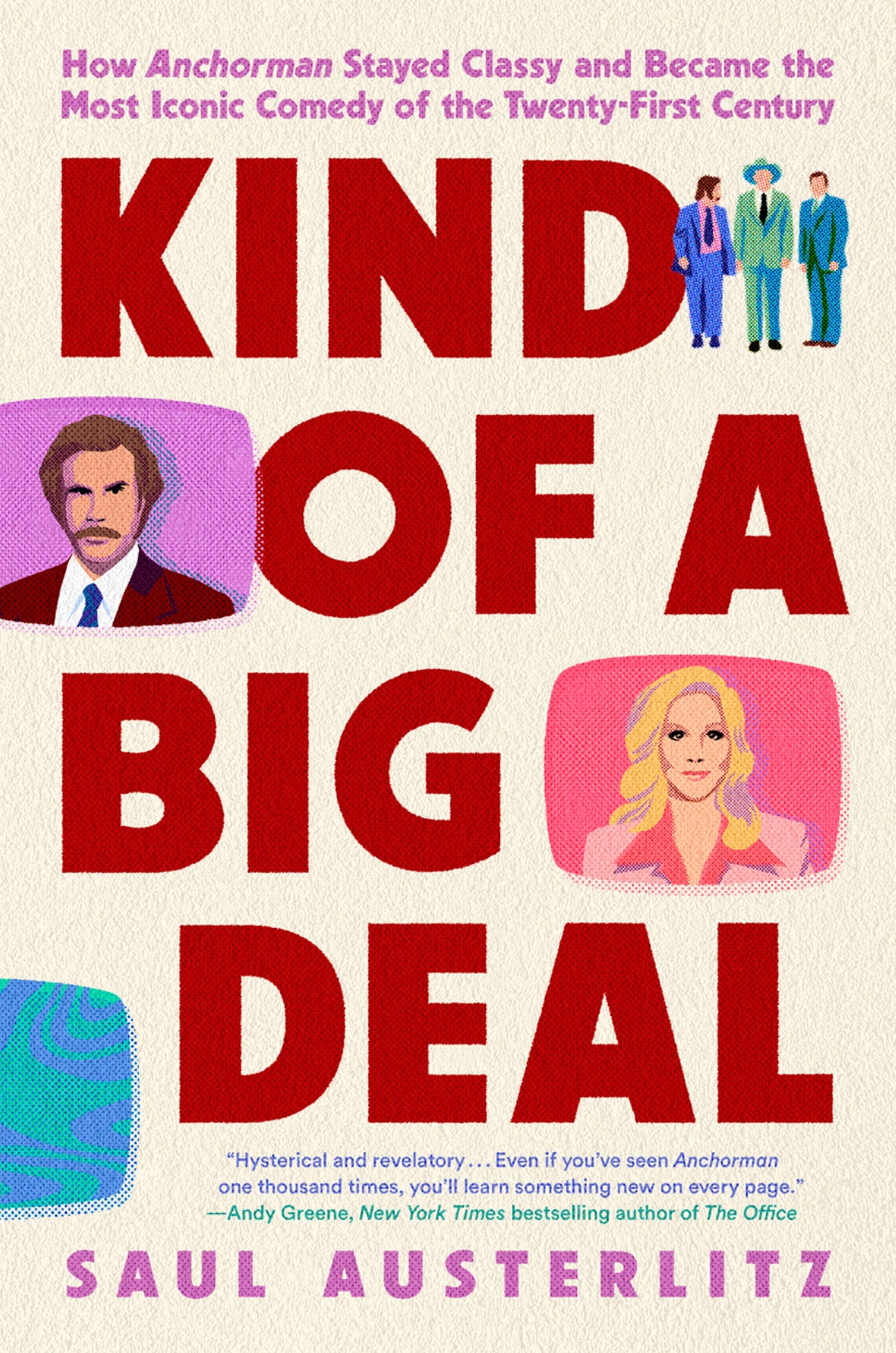
“Kind of a Big Deal: How ‘Anchorman’ Stayed Classy and Became the Most Iconic Comedy of the Twenty-First Century” by Saul Austerlitz (Dutton)
There are plenty of comedies that are known by many for their catchphrases and gags more than the actual plot of the movies — from “Airplane!” to “Blazing Saddles." An easy addition to that list is “Anchorman,” the comedy about a 1970s TV newsman that has gained a cult following since it was released nearly two decades ago.
Mention the film at most parties, at least one person is bound to pipe up with lines like “I love lamp” or “that escalated quickly,” or offer their own recap of the movie's no-holds-barred street fight among competing anchors.
But in “Kind of a Big Deal: How ‘Anchorman’ Stayed Classy and Became the Most Iconic Comedy of the Twenty-First Century,” Saul Austerlitz makes a compelling — and hilarious — case that the movie deserves much deeper consideration.
An adjunct professor of writing and comedy history at New York University, Austerlitz tells the story of how the the film about the now-iconic fictional newsman Ron Burgundy played by Will Ferrell made its way to the big screen.
It's hard to believe, but the movie created by Ferrell and director Adam McKay could have been an even weirder one that included a plotline about cannibalism and a killer orangutan armed with throwing stars. Luckily, neither storyline went into the eventual script.
Featuring fresh interviews with Ferrell, McKay and others from the hit film, Austerlitz's book is a fascinating account of how much work goes behind creating a movie that's become a mainstay among weekend cable channel fare.
The details on ideas or cameos that didn't the make the screen are just as fascinating as what made the final product. Austerlitz writes how Ferrell and McKay reached out to real-life anchorman Ted Koppel to inquire about making a cameo appearance as Burgundy's fictional mentor.
“It was the fastest no they had ever received,” Austerlitz writes.
Austerlitz doesn't confine the book to a collection of behind-the-scenes stories about the film's making. One of its few weaknesses, in fact, is its detailed plot recaps of other films McKay and Ferrell made in the year's following the release of “Anchorman.”
The book makes a strong argument for viewing the film as a commentary on the dangers of toxic masculinity, illustrated by the buffoonery that Christina Applegate's Veronica Corningstone character endures as she pursues her dream of being an anchorwoman. The film, Austerlitz writes, also could be seen in some ways as a “shadow biopic” of broadcast pioneer Jessica Savitch.
Austerlitz also doesn't shy from pointing out the movie's flaws, including jokes that haven't aged well with time. He also raises the understandable question about whether some fans quoting Burgundy's sexist jabs are in on the joke — or agreeing with his worldview.
One doesn't have to be an “Anchorman” to appreciate the book. They could, as Ron Burgundy would say, just need an addition to the many leather-bound books in their apartment that smells of rich mahogany.







